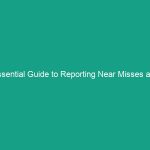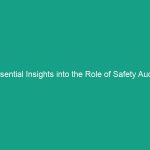Introduction
Good morning team! Today, we’re going to delve into a crucial topic that impacts not just our work but our very lives—safety. Specifically, we will discuss the essential guidelines for pushing Safety and how we can avoid critical risks in our daily operations. Understanding and implementing these guidelines is vital to ensuring a safe and productive work Environment. So, let’s take a moment to grasp why this topic is so important and how it directly affects each of us.
Understanding Essential Guidelines for Pushing Safety
The phrase essential guidelines for pushing safety refers to the proactive measures and strategies that we can adopt to enhance our safety protocols. These guidelines not only protect us from potential Hazards but also foster a culture of safety within our organization.
It’s important to recognize that safety is not just a set of rules to follow; it’s a mindset that we must cultivate. Many employees believe that safety protocols are merely suggestions rather than essential practices. This misconception can lead to negligence and increased risks. Remember, safety is everyone’s responsibility!
Key Hazards, Risks, and Safety Considerations
Now, let’s identify some specific hazards and risks associated with our work environment:
- Slips, Trips, and Falls: These are among the most common workplace injuries. Wet floors, uneven surfaces, and clutter can lead to serious accidents.
- Hazardous Materials: Exposure to chemicals or other hazardous substances can pose significant health risks if not handled correctly.
- Machine Safety: Improper use or Maintenance of machinery can lead to severe injuries.
- Workplace Violence: This includes any act of violence against employees, which can create a hostile work environment.
Ignoring these safety protocols can result in real-world consequences, including injuries, loss of productivity, and increased insurance costs. We must take these risks seriously and implement effective Safety Measures.
Best Practices, Procedures, & Actionable Advice
To effectively push safety within our workplace, here are some Best Practices and Procedures that we should follow:
1. Conduct Regular Safety Training
Safety training should be an ongoing process. Regular training sessions help keep safety protocols fresh in employees’ minds. Consider holding monthly safety meetings to discuss any new guidelines or reviews of existing ones.
2. Use Personal Protective Equipment (PPE)
PPE is your first line of defense against workplace hazards. Always wear the appropriate gear for your specific tasks, such as helmets, gloves, and goggles. Make sure that the PPE is properly maintained and inspected regularly.
3. Maintain a Clean and Organized Work Environment
A tidy workspace reduces the risk of accidents. Encourage everyone to clean up after themselves and properly store tools and materials. Implement a ‘clean as you go’ policy to keep the workplace safe.
4. Report Hazards Immediately
If you notice a potential hazard, report it to your supervisor right away. Do not assume someone else will take care of it. Prompt reporting can prevent accidents before they occur.
5. Review Incident Reports
Analyzing incident reports can provide valuable insights into recurring issues and help develop solutions to prevent future occurrences. Encourage an open dialogue about past incidents to learn and improve safety practices.
Regulations, Standards, and Compliance
Compliance with safety Regulations is not optional; it’s a necessity. Adhering to Standards set by organizations such as OSHA (Occupational Safety and Health Administration) ensures that we prioritize the safety and well-being of all employees. Failure to comply with these regulations can result in severe penalties and increased risks.
Regular audits and inspections are essential to maintaining compliance. Ensure that your department is up to date with all relevant safety standards and practices.
Employee Engagement & Discussion
Now that we’ve discussed some essential guidelines for pushing safety, let’s open the floor for a discussion. What safety challenges have you encountered related to pushing safety? How can we work together to improve our safety protocols? Your input is invaluable in creating a safer workplace.
Conclusion & Key Takeaways
In summary, implementing the essential guidelines for pushing safety is critical to preventing workplace accidents and ensuring a safe environment for everyone. Remember to:
- Participate in regular safety training.
- Use appropriate PPE.
- Keep your workspace clean and organized.
- Report hazards immediately.
- Review and learn from incidents.
By prioritizing safety, we not only protect ourselves but also contribute to a positive work culture that values health and well-being. Thank you for your commitment to safety today and every day. Let’s work together to ensure that we all return home safely!


